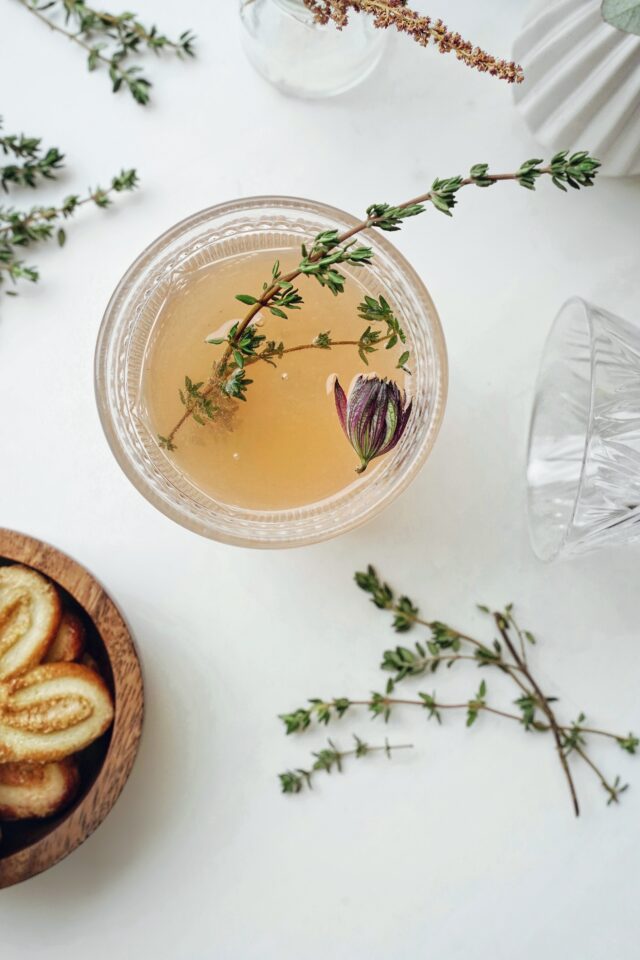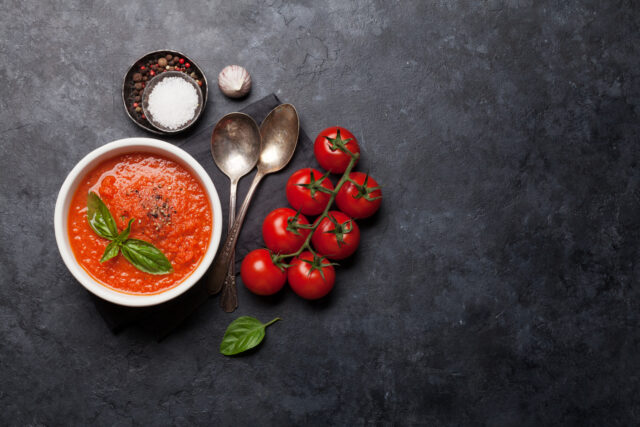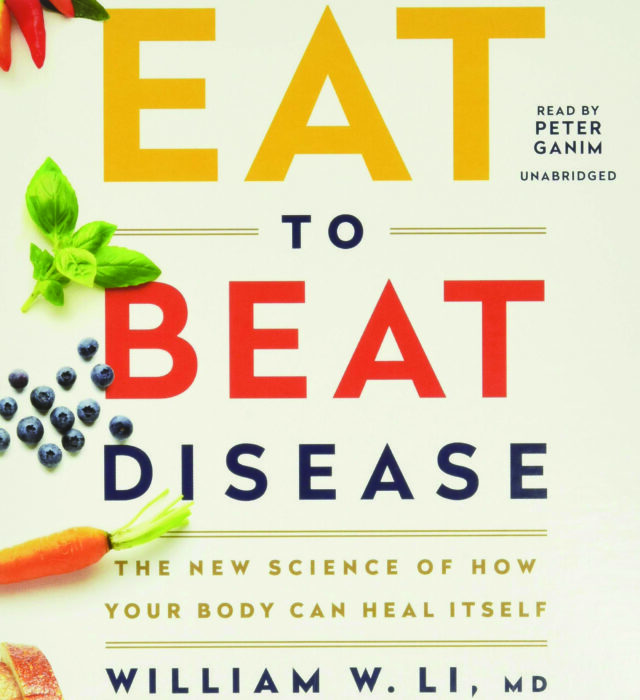
CRISTINA CUOMO: I am a huge fan of your book, Eat to Beat Disease: The New Science of How Your Body Can Heal Itself. It’s where holistic medicine meets science. You are a pioneer. With so much emphasis on building our immune system strength, and gut health directly affecting all bodily systems and fighting disease, can you give us a synopsis about our natural defense systems and why they are equally important in understanding a new definition of health?
DR. WILLIAM W. LI: As a medical doctor and research scientist, I’ve taken care of many people who are ill. My question has always been, why don’t we get sick more often? What makes us healthy at all? That’s part of what led me to this journey to understand how foods can help the body’s natural defense systems. These are hardwired systems that we’re born with, so from the time we come out of our mom to our very last breath, our defenses are working as hard as they can to intercept illness, protect our body and fix things when they are actually broken. Our circulation, our blood vessels, angiogenesis [the formation of blood vessels], 60,000 miles’ worth of blood vessels that connect every organ in our body, delivering oxygen and nutrition, it’s exactly what we need to remain alive and functional. When those blood vessels go down or when we get too many blood vessels to feed disease, we get into big trouble.
Science tells us now that humans regenerate from a small number of stem cells that live inside our bone marrow, in the middle of our bones, and our diet and lifestyle and foods can actually coax them to repair themselves from the inside out. That’s the defense system that slows down our aging and our ability to stay vibrant and youthful. Our microbiome is the tip of the iceberg; we know that our gut microbiome not only makes our gut healthy, but also controls hormones out of our brains. Our DNA is another repair system. DNA can fix itself when it’s being damaged by too much sunshine, solvents that we breathe in, second-hand smoke, preservatives from chemicals that we eat that cause damage in our bodies. Our DNA is hardwired to fix itself. Our chromosomes have telomeres at their ends that shorten as we age, like a candle’s wick. When telomeres burn down really fast, we age more quickly and that’s why skin looks so wrinkled and why hair looks so crappy.
But our diet and lifestyle can slow the burn or even reverse the burn. Our immunity is an additional defense system that’s more powerful than we thought. It can get rid of cancer. Even when the cancer spreads throughout the body, our immune system can clean up and remove all the cancer. These are our health defenses: angiogenesis, stem cell regeneration, the microbiome, DNA repair, and our immunity. These are the five pillars of our health. The great news is that what we eat can activate them and help our bodies get stronger.
CC: You talk about anti-angiogenic foods and their ability to decrease the growth around a tumor or some form of disease. We have 19 billion capillaries that have the capacity to control whether disease survives or not. How do these anti-angiogenic foods work?
WL: There are so many blood vessels in our body that if you were to pull out all of the vessels and line them up end to end like a big thread, like yarn, you would form a line that would wrap around the Earth twice. You’re talking about one of the most amazing organs in the body, and they actually deliver things to help feed our cells. If you’re feeding healthy cells and organs, those become the vessels of life. What we eat goes into our stomach and into our bloodstream, so they convey nutrients through our organs and help keep them alive. There are diseases like cancer that hijack blood vessels, and most people don’t know that we’re forming cancers on our body all the time. Like a pimple on our skin.

CC: That’s the first line of your book! The first line of the angiogenic chapter, we all have cancer growing in our bodies. That’s so scary, by the way.
WL: I want people to understand that our health defenses can make cancer not an issue. Although small cancerous cells can pop up, they can’t grow bigger because they don’t have a blood supply normally. Your immune system cruises around like a cop on a beat and finds these weird-looking cells and cleans them right up. That’s why many cancers don’t appear until we’re older and our immune system goes down. When cancers do develop, they actually release these proteins and hijack blood vessels so extra blood vessels grow up and feed the cancers. Think about a garden, and if a cancer is a weed it’s stealing the water and fertilizer that you’re using to make your flowers grow really well, and then the weeds can overgrow. When cancers actually steal blood vessels and feed themselves they can explode.
Here’s an amazing fact: A cancer that is without a blood supply can only be the size of the tip of a ballpoint pen. But the moment they hijack blood vessels, they can grow 16,000 times in size in just two weeks…so it explodes. The same blood vessels that feed the cancer also allow cancer cells to escape into the circulation. So, foods that can actually right size our blood vessels and prevent those extra blood vessels through anti-angiogenic foods help our body mow the lawn, keeping the perfect level of blood vessels at all times all throughout our body—not too few, not too many, just like Goldilocks. So cancers can’t be fed. That’s what eating these anti-angiogenic foods can actually do.
CC: Can you give some examples of foods with anti-angiogenic effects and how they are helpful in protecting the body?
WL: Mother Nature is very clever. She usually gives foods lots of different job descriptions. Not surprisingly, some of the foods we already know are good for us. Like green tea, for example, is not only anti-inflammatory, stress reducing, and helps your blood sugars and your blood lipids get a little bit better, but a compound in green tea called EgCg actually prevents extra blood vessels from growing and developing into cancer, according to epidemiological studies. We’ve studied Chinese jasmine tea, Japanese matcha and Earl Grey. Research has found that Earl Grey, a dark black tea with bergamot, with an orange-citrus flavor, is more powerful than green tea to stop tumors from growing in blood vessels.
CC: In your TED Talk you’ve discussed food synergies. What does that mean?
WL: We don’t eat foods in isolation; we eat them together. I’m a believer that food is not only important for our nutrition and our health; it’s also important to who we are. Food is part of the soul of humanity. That’s where food synergies come from. In tomatoes, there is a natural chemical called lycopene, that actually can reduce the risk of prostate cancer. In a Harvard study of 70,000 people, they found that men who consumed two to three cups of tomato sauce had up to a 30 percent decreased risk of prostate cancer. But if you picked a tomato off a vine, the lycopene that comes from the garden is not readily absorbed by the body. If you sauté that tomato, heat gently changes the chemistry into a form your body loves to absorb. Lycopene is fat-soluble, which means it dissolves in oil. That’s food synergy. Tomato sautéed with olive oil is a traditional dish.
CC: I think the burning question on everyone’s minds today is COVID. How does angiogenesis have a role in staving off COVID or healing from it?
WL: At the beginning of this pandemic I felt I had to contribute something to help humanity get out of this crisis we’re in. What I found was startling: COVID-19 not only gets into our lungs; it makes a beeline to infect the cells of our blood vessels. Now you’ve got a blood vessel infection, or a vascular disease. We’ve talked about blood vessels in cancer, but we haven’t talked about blood vessels in healing. If you get injured and have a scab, if it falls off prematurely you see you have this bright red stuff pop up underneath. That’s your body mounting an angiogenic blood vessel-growing response, to deliver new vessels to bring nutrients and oxygen to heal that wound. So when the body naturally heals after injury, it wants to bring blood vessels in.
We’ve found with COVID that it infects the lungs and then the blood vessels in the body. When they’re infected they get injured. So now the body mounts an angiogenic response, trying to grow new vessels to get around and repair the damage. This is why we have blood clotting, affecting the brain, the lungs, heart, kidneys, toes. All these crazy things we’re seeing is a matter of inflammation, blood vessel damage, nerve damage, all converging—the so-called “long-hauler” or “post-COVID” syndrome. There are foods you can eat to amp up your immunity so the disease doesn’t get into your blood vessels, or into your olfactory glands, the ones behind your nose that allow you to smell. If you’ve had COVID, one of the things you take to prevent damage is anticoagulant blood thinners. But that’s serious business there. We can use diet, like dark chocolate, cacao flavanols, to actually repair blood vessels. It turns out that fruit peel has a natural chemical called ursolic acid that can stimulate angiogenesis.

CC: The “Assess Your Risk” chapter is a great way to score your genetic and medical history and understand your risk better. Why do you think everyone needs to understand their own body fully now more than ever to direct their genetic fate?
WL: Everyone is individual, and when we talk about personalized nutrition, we talk about what works for us. I talk about taking stock and auditing what we know about ourselves. Our lifestyle, our parents, our job, our kids, our homes, where we live or lived, our genetics, everything we know about ourselves. That informs how we should approach nutrition.
CC: What is one thing you’d like our readers to do first for the sake of their health?
WL: I want people to love their food in order to love their health. Take stock of foods that you actually love to eat and you’re already ahead of the game. Go online and search for recipes that excite you. When you open up a restaurant menu, cruise down the list of ingredients and look for things you recognize that will light up your health.
CC: As a pioneer of angiogenesis-based medicine, did you find it difficult to acquire funding for your organization, The Angiogenesis Foundation, and support for clinical trials?
WL: We started 27 years ago; we’re a 501(c)(3) organization based in Cambridge, Massachusetts. Back then there were no angiogenic treatments. Finally, when the treatments started to come by, because we were involved with 34 FDA-approved treatments, people started to pay more attention. And we got a lot of corporate support. When we started to look at food, it became more difficult to get funding. Because food isn’t about companies. Food is by the people, for the people. I want to invest in people who are not afraid to figure out what Mother Nature has always known and bring it to the people. And for me, that’s my mission in life now, to bring my organization back into harmony and nature and let food do it.





